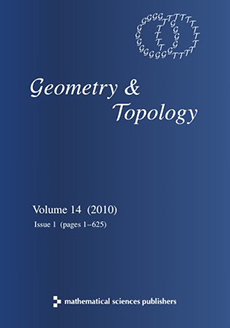Abstract
We define a class of noncompact Fano toric manifolds which we call admissible toric manifolds, for which Floer theory and quantum cohomology are defined. The class includes Fano toric negative line bundles, and it allows blow-ups along fixed point sets.
We prove closed-string mirror symmetry for this class of manifolds: the Jacobian ring of the superpotential is the symplectic cohomology (not the quantum cohomology). Moreover, is obtained from by localizing at the toric divisors. We give explicit presentations of and , using ideas of Batyrev, McDuff and Tolman.
Assuming that the superpotential is Morse (or a milder semisimplicity assumption), we prove that the wrapped Fukaya category for this class of manifolds satisfies the toric generation criterion, ie is split-generated by the natural Lagrangian torus fibers of the moment map taken with suitable holonomies. In particular, the wrapped category is compactly generated and cohomologically finite.
We prove a generic generation theorem: a generic deformation of the monotone toric symplectic form defines a local system for which the twisted wrapped Fukaya category satisfies the toric generation criterion. This theorem, together with a limiting argument about continuity of eigenspaces, are used to prove the untwisted generation results.
We prove that for any closed Fano toric manifold, and a generic local system, the twisted Fukaya category satisfies the toric generation criterion. If the superpotential is Morse (or assuming semisimplicity), also the untwisted Fukaya category satisfies the criterion.
The key ingredients are nonvanishing results for the open-closed string map, using tools from the paper by Ritter and Smith; we also prove a conjecture from that paper that any monotone toric negative line bundle contains a nondisplaceable monotone Lagrangian torus. The above presentation results require foundational work: we extend the class of Hamiltonians for which the maximum principle holds for symplectic manifolds conical at infinity, thus extending the class of Hamiltonian circle actions for which invertible elements can be constructed in . Computing is notoriously hard and there are very few known examples beyond the cases of cotangent bundles and subcritical Stein manifolds. So this computation is significant in itself, as well as being the key ingredient in proving the above results in homological mirror symmetry.
Citation
Alexander Ritter. "Circle actions, quantum cohomology, and the Fukaya category of Fano toric varieties." Geom. Topol. 20 (4) 1941 - 2052, 2016. https://doi.org/10.2140/gt.2016.20.1941
Information





